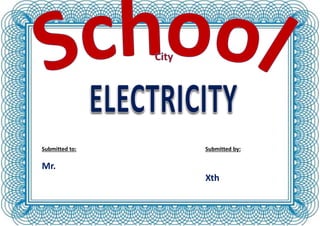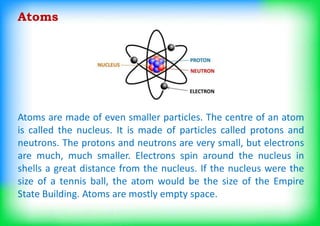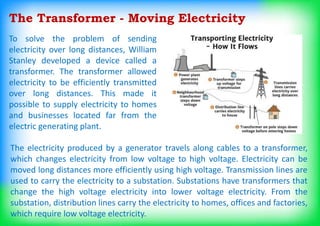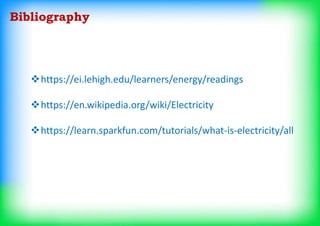Electricity is the flow of electrical power or charge generated from primary energy sources like coal, gas, and oil. It flows through atoms which are made up of a tiny nucleus surrounded by electrons that spin around at a distance. Atoms with an equal number of protons and electrons have no overall charge, while an imbalance creates a positive or negative charge. Electricity is generated using magnets and coils in generators to convert mechanical energy into an electrical current, which is then transported through power lines using transformers to change voltages for transmission or distribution. Electricity is measured in watts and kilowatt-hours and powers devices in homes and businesses through closed circuits.












